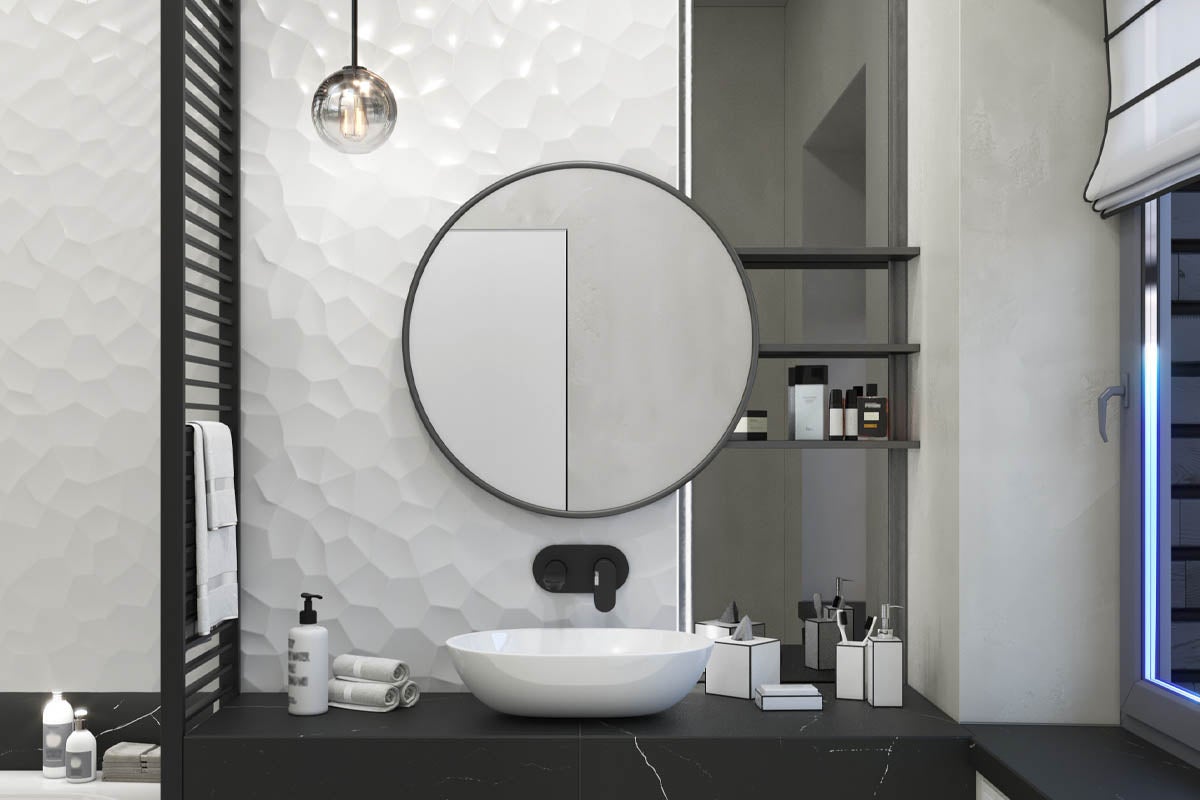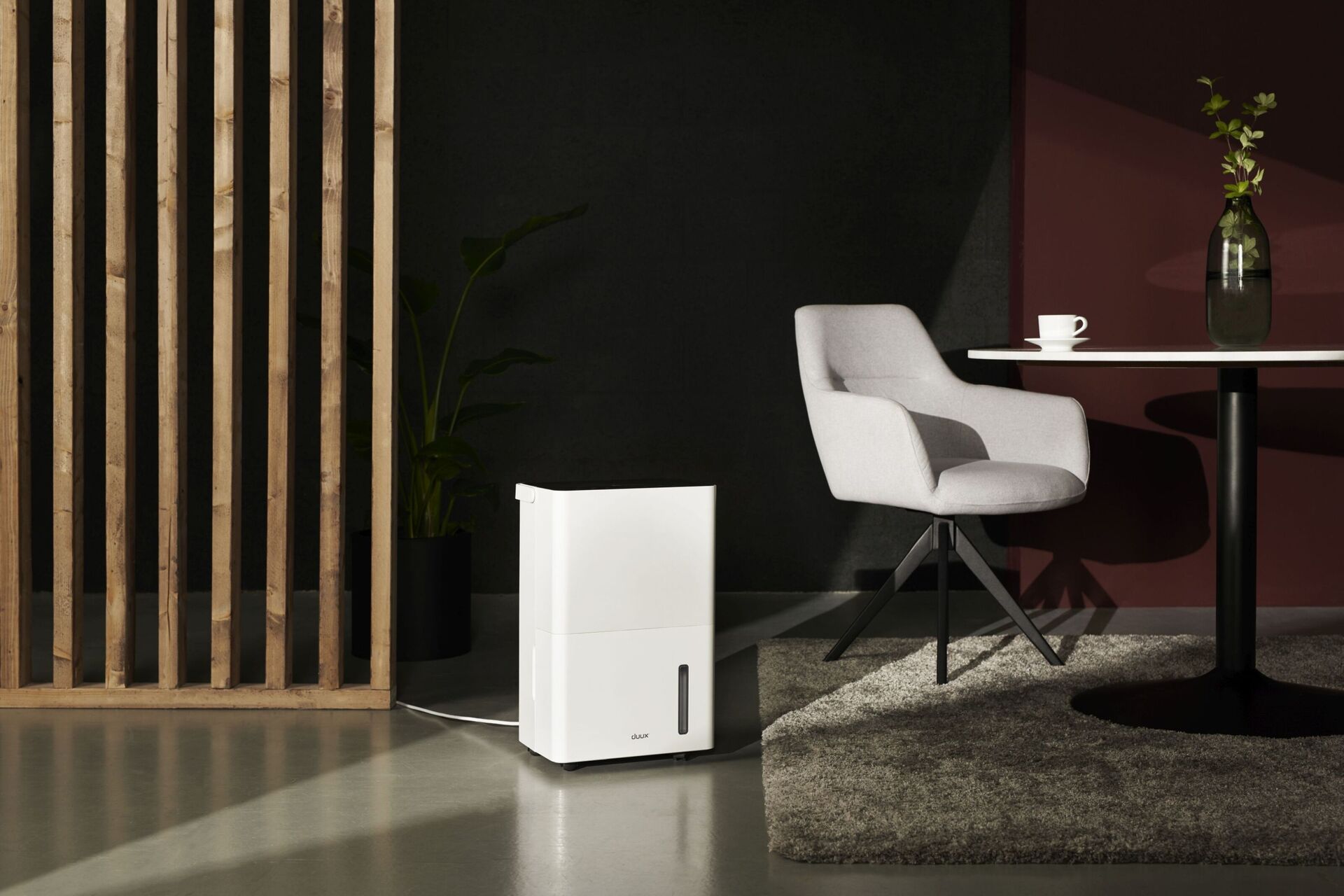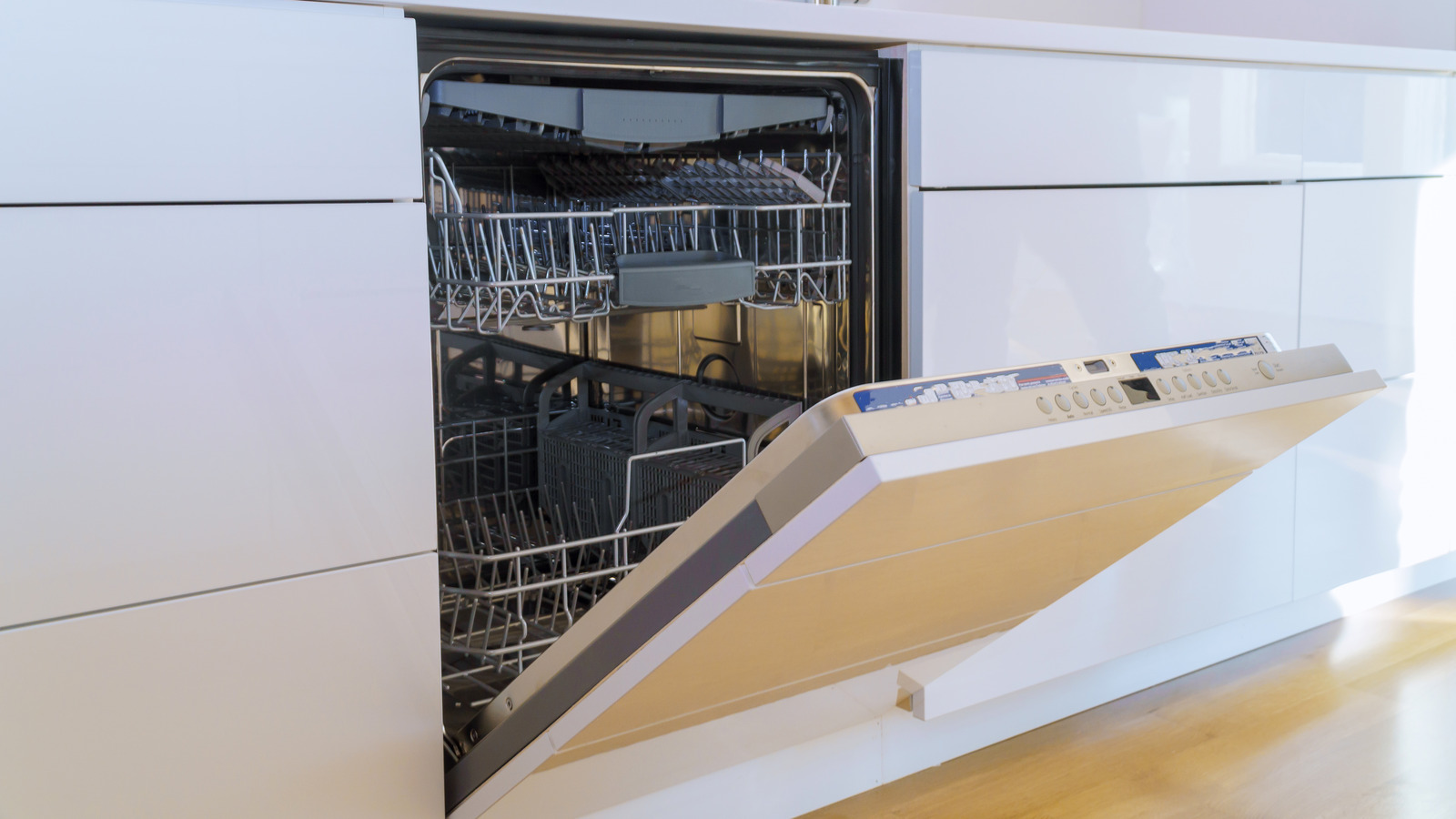

Articles
How Much Does It Cost To Tuckpoint A Chimney
Modified: October 23, 2024
Find out the approximate cost to tuckpoint a chimney in this informative article. Get expert tips and estimates to budget for your chimney maintenance.
(Many of the links in this article redirect to a specific reviewed product. Your purchase of these products through affiliate links helps to generate commission for Storables.com, at no extra cost. Learn more)
Introduction
When it comes to maintaining the integrity and longevity of your home’s chimney, tuckpointing is an essential process that should not be overlooked. Over time, the mortar between the bricks of your chimney can weaken and deteriorate due to exposure to harsh weather conditions. This can lead to a host of problems such as water infiltration, structural damage, and even the risk of collapse.
In this article, we will take a closer look at tuckpointing and explore everything you need to know about the process, including why it is necessary, the factors that affect the cost, and whether it is best to hire a professional or tackle it as a DIY project. So, let’s dive in and discover how much it costs to tuckpoint a chimney.
Key Takeaways:
- Tuckpointing is crucial for maintaining chimney integrity, preventing water damage, and enhancing curb appeal. The average cost ranges from $1,000 to $3,000, but consulting a professional for a personalized estimate is essential.
- While DIY tuckpointing may seem cost-effective, hiring a professional ensures expertise, durability, and safety. Investing in tuckpointing is an investment in the long-term health and value of your home.
Read more: How Much Does It Cost To Build A Chimney
What is Tuckpointing?
Tuckpointing is a specialized technique used to repair and restore the mortar joints between bricks and stones in a masonry structure. Over time, the mortar can deteriorate due to various factors such as weathering, exposure to moisture, and general wear and tear. When the mortar becomes weakened or starts to crumble, it compromises the structural integrity of the chimney.
The tuckpointing process involves removing the damaged or deteriorated mortar and replacing it with fresh mortar. This not only strengthens the mortar joints but also enhances the overall appearance of the chimney. Tuckpointing ensures that the bricks are properly aligned and sealed, preventing water infiltration and further damage.
The process starts with a thorough inspection of the chimney to identify areas that require tuckpointing. A chisel and grinder are then used to carefully remove the old mortar without causing damage to the surrounding bricks. Once the old mortar is removed, new mortar is applied, filling the gaps and creating a flush and even surface. The new mortar is skillfully matched to the color and texture of the existing mortar to ensure a seamless blend.
Tuckpointing is a highly skilled job that requires expertise and precision. It is essential to hire a professional mason who has experience in tuckpointing to ensure the job is done correctly and to avoid any further damage to the chimney.
Why is Tuckpointing Chimneys Necessary?
Tuckpointing chimneys is necessary for several reasons. First and foremost, it helps maintain the structural integrity of the chimney. The mortar in the joints acts as a binder, holding the bricks or stones together. As the mortar deteriorates, the chimney becomes susceptible to shifting, cracking, and eventually collapsing. Tuckpointing replaces the deteriorated mortar, ensuring the chimney remains stable and secure.
Another critical reason for tuckpointing is to prevent water infiltration. Over time, as the mortar joints deteriorate, they create gaps and openings where water can penetrate the chimney. Water infiltration can cause significant damage, such as mold growth, rotting wood, and even chimney leaks. By tuckpointing, these gaps are sealed, preventing water from entering the chimney and protecting the integrity of your home’s structure.
In addition, tuckpointing also helps improve the aesthetic appeal of your chimney. As mortar ages and deteriorates, it can become discolored, uneven, or even missing in some areas. Tuckpointing involves carefully matching the new mortar to the existing color and texture, restoring the chimney’s original appearance. This not only enhances the overall curb appeal of your home but also adds value to your property.
Furthermore, tuckpointing chimneys can help address potential issues before they worsen. During the tuckpointing process, an experienced mason can assess the condition of the bricks or stones and identify any underlying structural problems. By catching these issues early on, you can prevent further damage and potentially save money on more extensive repairs down the line.
Overall, tuckpointing chimneys is necessary to maintain the structural integrity, prevent water infiltration, improve aesthetics, and address potential problems. It is a proactive approach to chimney maintenance that ensures the longevity and safety of your home.
Factors Affecting the Cost of Tuckpointing a Chimney
Several factors can influence the cost of tuckpointing a chimney. It’s essential to understand these factors to get a more accurate estimate for your specific project. Here are the main factors that affect the cost:
- Chimney Size: The size of the chimney is a significant factor that affects the overall cost. Taller chimneys or those with more intricate designs may require additional time and effort to complete the tuckpointing process, leading to a higher cost.
- Extent of Damage: The extent of damage to the mortar joints will also impact the cost. If only a few areas require tuckpointing, the overall cost will be lower compared to a chimney with extensive mortar deterioration that needs complete re-pointing.
- Mortar Type: The type of mortar used for tuckpointing can affect the cost. Specialty mortars or custom blends may be more expensive than standard mortar options. The choice of mortar may depend on factors such as the age and style of the chimney.
- Access: The accessibility of the chimney can affect the cost. If the chimney is located in a hard-to-reach area or requires special equipment, additional time and effort will be needed, increasing the overall cost.
- Local Labor Costs: Labor costs can vary depending on the region and local market conditions. Areas with a high cost of living may have higher labor rates, influencing the overall cost of tuckpointing a chimney.
- Additional Repairs: In some cases, additional repairs may be necessary alongside tuckpointing. For example, if the chimney has damaged bricks or a deteriorated crown, these issues will need to be addressed, adding to the overall cost.
It is recommended to consult with a professional mason or contractor who can assess your specific chimney and provide a detailed estimate based on these factors. They will evaluate the overall condition of the chimney, factor in any additional repairs, and provide you with an accurate cost estimate for the tuckpointing project.
Get multiple quotes from reputable contractors to compare costs for tuckpointing your chimney. Consider the experience and reputation of the contractor, as well as the quality of materials they will use.
Average Cost of Tuckpointing a Chimney
The cost of tuckpointing a chimney can vary depending on several factors, as discussed earlier. However, on average, homeowners can expect to pay between $1,000 and $3,000 for tuckpointing a standard-sized chimney.
It’s important to note that this is a general estimate, and the actual cost can be higher or lower based on the specific circumstances of your chimney. Factors such as the size, extent of damage, location, and additional repairs needed all come into play when determining the final cost.
For smaller chimneys or those with minimal mortar deterioration, the cost can be on the lower end of the spectrum, closer to the $1,000 mark. On the other hand, larger chimneys or those with extensive damage may require more time and materials, pushing the cost towards the higher end or even beyond.
It’s always a good idea to get multiple quotes from reputable masons or contractors before hiring someone to perform the tuckpointing job. This will allow you to compare prices and ensure you are getting a fair and competitive rate.
Additionally, keep in mind that the cost of tuckpointing is an investment in the long-term maintenance and preservation of your chimney. By addressing any mortar deterioration promptly, you can prevent more severe damage and potentially save money on costly repairs down the line.
Remember, when considering the cost, it’s important to also consider the experience and expertise of the professional you hire. Skilled masons who specialize in tuckpointing may charge higher rates, but their knowledge and craftsmanship can ensure a high-quality and long-lasting result for your chimney.
To get a more accurate estimate for your specific chimney, it is recommended to consult with a professional who can assess the condition, size, and other factors influencing the cost. They will provide you with a detailed quote based on your unique circumstances.
Read more: How Much Does Chimney Inspection Cost
Additional Costs to Consider
When tuckpointing a chimney, there are some additional costs that homeowners should be aware of. These costs may vary depending on the specific requirements of your chimney and the overall condition of the masonry. Here are some common additional costs to consider:
- Brick Replacement: During the tuckpointing process, it’s possible that some bricks may be damaged and need to be replaced. The cost of replacing bricks will depend on factors such as the type of bricks, their availability, and the extent of the damage.
- Crown Repair or Rebuilding: The chimney crown, which is the topmost part of the chimney, can deteriorate over time. If the crown is cracked or damaged, it may require repair or complete rebuilding. The cost of crown repair or rebuilding should be factored in addition to the tuckpointing cost.
- Flue Liner Installation: If your chimney doesn’t have a flue liner or if the existing liner is damaged, you may need to install a new flue liner. The cost of a flue liner can vary depending on the material used (e.g., stainless steel, clay, or cast-in-place) as well as the size and length of the chimney.
- Chimney Cap Replacement: A chimney cap is essential for protecting the chimney from water, debris, and animals. If your chimney cap is damaged or missing, it may need to be replaced. The cost of a new chimney cap will depend on the materials used and the design.
- Chimney Cleaning: Before tuckpointing, it’s necessary to clean the chimney to remove any debris, soot, or creosote buildup. If your chimney hasn’t been cleaned for a long time, you may need to hire a professional chimney sweep to perform this service, which will incur an additional cost.
It’s important to discuss these additional costs with your chosen professional mason or contractor and include them in the overall budget for your chimney project. By addressing any necessary repairs or replacements alongside tuckpointing, you can ensure the long-term stability and functionality of your chimney.
Keep in mind that investing in these additional services is crucial for maintaining the safety and efficiency of your chimney. Regular maintenance and repairs will prolong the lifespan of your chimney and potentially save you money on more extensive repairs in the future.
DIY vs Hiring a Professional
When it comes to tuckpointing a chimney, homeowners often wonder whether they should tackle the project themselves or hire a professional. While it may be tempting to save money by attempting a DIY approach, there are several factors to consider before making a decision.
Tuckpointing is a precise and labor-intensive process that requires knowledge, skills, and experience. It involves using specialized tools and techniques to remove old mortar and replace it with new mortar. A professional mason has the expertise to ensure the job is done correctly, with attention to detail and quality craftsmanship.
Here are a few factors to compare when considering DIY versus hiring a professional:
- Experience and Skill: Tuckpointing requires specialized skills and knowledge to achieve the best results. A professional mason will have the necessary experience and expertise to handle the intricate details of tuckpointing, ensuring the mortar joints are properly aligned, sealed, and matched to the existing mortar.
- Time and Effort: Tuckpointing can be a time-consuming and physically demanding task. It involves carefully removing old mortar, mixing new mortar, and meticulously applying it to the joints. By hiring a professional, you can save yourself the time and effort required for the job, allowing you to focus on other priorities.
- Tools and Equipment: Tuckpointing requires specific tools and equipment, such as grinders, chisels, and trowels. Purchasing or renting these tools can add to the overall cost of a DIY project. Professionals already possess the necessary tools, ensuring the job is done efficiently and effectively.
- Safety Considerations: Tuckpointing can involve working at heights and handling potentially hazardous materials. Professionals are trained in proper safety protocols, ensuring the job is done safely and minimizing the risk of accidents or injuries.
- Long-Term Durability: Tuckpointing performed by a professional mason is more likely to result in a long-lasting and durable outcome. Improperly done DIY tuckpointing may lead to future issues, such as mortar failure or water infiltration, which can result in costly repairs down the line.
While DIY tuckpointing may seem like a cost-saving option, it’s important to weigh the potential risks and drawbacks. If you have experience with masonry work and feel confident in your abilities, you may be able to tackle a smaller tuckpointing project. However, for larger or more complex chimneys, it’s best to hire a professional mason to ensure a high-quality and long-lasting result.
Consulting with a professional and obtaining a quote for the project can help you make an informed decision based on your specific chimney’s needs and your own capabilities. Remember, investing in professional tuckpointing services is an investment in the long-term health and longevity of your chimney.
Conclusion
Tuckpointing is an essential process for maintaining the structural integrity, aesthetic appeal, and longevity of your chimney. By addressing the deteriorated mortar joints, tuckpointing prevents water infiltration, protects against further damage, and enhances the overall appearance of your chimney.
When considering the cost of tuckpointing, it’s important to factor in the size of your chimney, the extent of damage, and any additional repairs that may be needed. While the average cost of tuckpointing a chimney can vary between $1,000 and $3,000, it’s always advisable to consult with a professional for an accurate estimate based on your unique circumstances.
While DIY tuckpointing may seem like a cost-saving option, it’s essential to consider the level of experience, time commitment, necessary tools, and safety concerns involved with the project. Hiring a professional mason ensures a high-quality and long-lasting result, saving you potential headaches and expenses in the future.
Remember, tuckpointing is not just a maintenance task; it’s a proactive measure to protect your chimney from further damage and to preserve the value and safety of your home. Regular tuckpointing, along with proper chimney maintenance, will go a long way in ensuring the longevity of your chimney and the comfort of your home.
So, when it comes to tuckpointing your chimney, make an informed decision based on the specific needs of your chimney and consult with a professional to get the best results. Your chimney will thank you for the care and attention you give it through proper tuckpointing.
Frequently Asked Questions about How Much Does It Cost To Tuckpoint A Chimney
Was this page helpful?
At Storables.com, we guarantee accurate and reliable information. Our content, validated by Expert Board Contributors, is crafted following stringent Editorial Policies. We're committed to providing you with well-researched, expert-backed insights for all your informational needs.















0 thoughts on “How Much Does It Cost To Tuckpoint A Chimney”